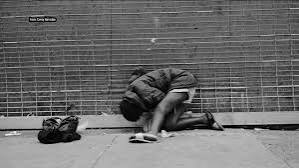Introduction: The Forgotten Wasteland
Kensington, Philadelphia. A place where the American dream once flourished, now buried beneath the weight of addiction, crime, and abandonment. Walking its streets is like stepping into a post-apocalyptic nightmare—where bodies slump against graffiti-stained walls, needles litter the pavement, and the air is thick with desperation. The stench of human decay, the vacant stares of the lost, the silent screams of a city forgotten. Kensington is not just another troubled neighborhood; it is a graveyard of dreams.

The Rise and Fall: A Neighborhood’s Death Sentence
Kensington wasn’t always a place of ruin. Once a thriving industrial hub, it was home to factories, textile mills, and working-class families who believed in a future worth striving for. But as industries collapsed and jobs vanished, the neighborhood unraveled. Poverty took root, crime soared, and the opioid crisis sunk its claws deep into its streets. By the late 20th century, Kensington had become the epicenter of Philadelphia’s drug trade, a lawless expanse where hope was the first casualty.
The Faces of Addiction: Stories from the Void
Every street corner in Kensington tells a different horror story. Lisa, a 29-year-old former nurse, once saved lives in a bustling hospital. Now, she barely clings to her own, selling her body for the next fix. Michael, a father of two, was once a construction worker. Now, he sleeps beneath an overpass, his arms riddled with track marks, his mind lost to the grip of heroin.
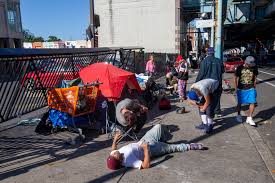
There is no judgment here—only the harsh reality of a system that fails its most vulnerable. Many of these souls were not born into addiction; they were prescribed their doom. Doctors flooded communities with opioids, and when regulations cracked down, fentanyl and meth took their place. The cycle is merciless.
A City’s Indifference: How the System Gave Up
Philadelphia’s government knows about Kensington’s plight, but the response has been feeble at best. Police conduct raids, only for dealers to return within hours. Harm reduction programs hand out clean needles, yet overdoses skyrocket. Homeless shelters overflow, but the streets remain the primary refuge. The city’s strategy, if one exists at all, is a patchwork of temporary fixes for a permanent disaster.
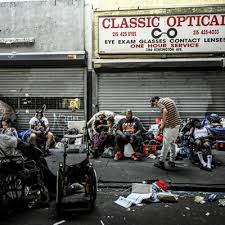
The Death of the American Dream
Kensington is the rotting corpse of an America that promised prosperity but delivered despair. The American dream—a home, a job, a family—feels like a cruel joke here. What happens when a society abandons its people? What does it say when entire neighborhoods are left to decay, their residents seen as disposable? Kensington is not an anomaly; it is a warning of what happens when greed, negligence, and corruption win.
The Drug Lords of Kensington: The Economy of Despair
The open-air drug markets of Kensington are not random; they are carefully controlled by a network of dealers and criminal organizations that profit from human suffering. Law enforcement cracks down on street-level dealers, but the real power brokers remain untouched, operating from a distance. The local economy is built on destruction—dealers thrive, landlords rent out decrepit buildings to desperate addicts, and businesses that cater to the drug trade flourish in the shadows.

Residents who remain face an impossible choice: stay and endure the chaos or leave and abandon the only home they’ve ever known. For many, the cost of moving is too high, and so they remain, trapped in an unending nightmare.
The Children of Kensington: Innocence Stolen
Perhaps the most heartbreaking casualties of Kensington’s collapse are the children who grow up in its unforgiving streets. Many are born into addiction, their mothers using drugs while pregnant, dooming them to withdrawal symptoms before they even take their first breath. Schools in the area struggle to function, as students battle hunger, trauma, and a daily exposure to violence.
Social workers recount horror stories of children who have learned to recognize different drugs before they learn to read, who know how to administer Narcan before they know their multiplication tables. The future of these children is stolen before it ever has a chance to begin.
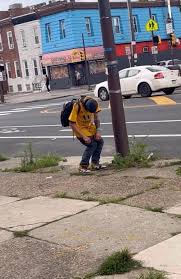
The Healthcare Crisis: Treating Addiction with Band-Aids
Hospitals in Philadelphia are overwhelmed with overdose cases, yet the healthcare system treats addiction like a behavioral issue rather than the medical emergency it is. Rehab facilities are few and far between, and many require insurance that addicts simply don’t have. The cycle continues—an addict overdoses, is revived, and within hours, they are back on the streets looking for their next fix.
Doctors who once overprescribed opioids now hesitate to prescribe pain medication to those who genuinely need it, fearing legal repercussions. Meanwhile, those who are already addicted find themselves cut off from legitimate sources, turning to dangerous street drugs laced with deadly fentanyl.
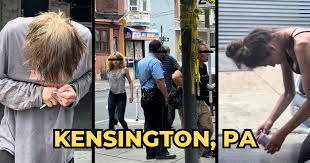
The Homeless Epidemic: A City Without Shelter
Homelessness and addiction go hand in hand in Kensington. Many of the people living in makeshift encampments were once members of the working class, now discarded by a system that no longer has a place for them. Shelters are overcrowded, and many addicts prefer the streets to rehab centers that require them to quit cold turkey without adequate support.
A stroll through Kensington Avenue reveals tent cities, where people huddle together for warmth, their bodies barely more than skin and bone. The lucky ones find abandoned buildings to squat in, while others rely on the kindness of strangers to survive another day.
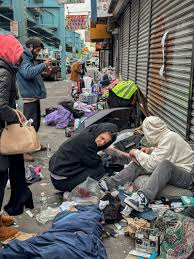
Can There Be Redemption?
Is there a way back? Some believe so. Community activists fight tirelessly, non-profits try to offer refuge, and a handful of former addicts claw their way out, determined to reclaim their lives. But without sweeping reforms, without real investment in rehabilitation, job creation, and mental health services, Kensington’s fate is sealed.
The people who work in the trenches—volunteers, nurses, social workers—continue to believe in change. They hand out food, they offer safe spaces, they provide what little hope they can. But against the vast machine of corruption, indifference, and systemic failure, their efforts are like trying to stop a flood with a single sandbag.
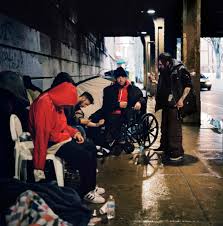
Conclusion: A Nation’s Shame
This is the story of a place where hope has been abandoned. A place that America would rather forget. But we must not look away. Because Kensington is more than just a neighborhood—it is a reflection of a nation in decline.
If America cannot save Kensington, what hope is there for any struggling community? How long before other neighborhoods fall into the same abyss? The crisis of Kensington is not just about drugs; it is about the failure of a system that was meant to protect its people but has instead abandoned them to the streets.
For now, the streets of Kensington remain filled with the lost. And until something changes, they will remain there, waiting—for a miracle that may never come.
